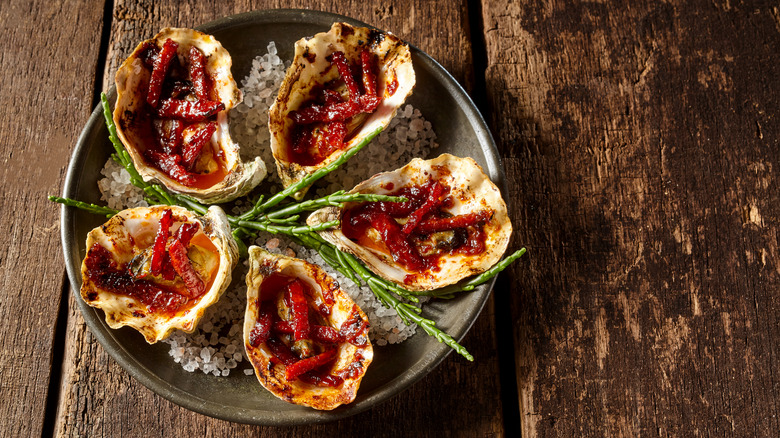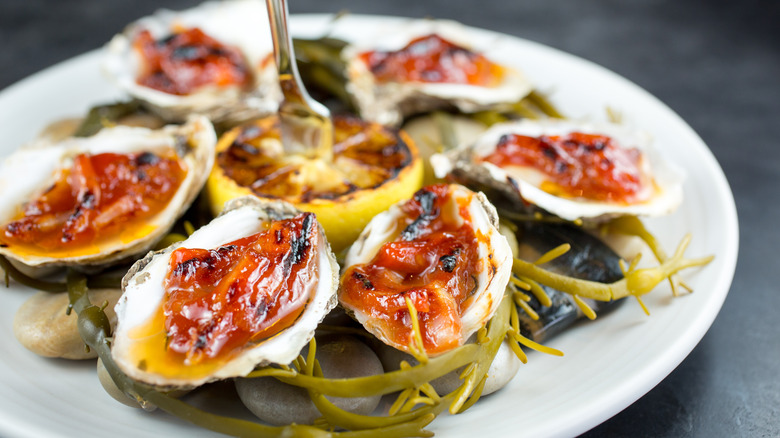Various Theories Surround The Namesake Of Oysters Kilpatrick
There are a surprising number of oyster dishes named after notable people. Some of these namesakes were rich, some were politicians, and some just happened to be in the right place at the right time, thereby ensuring a measure of culinary immortality. Oysters Rockefeller, for instance, was named for John D. Rockefeller. The Standard Oil tycoon had no connection to Antoine's, the restaurant in New Orleans where oysters Rockefeller were invented, but he was reportedly the richest man in America in 1899, the date of the dish's creation. Thus, his name was chosen to express the richness of the butter, herb, and bread-crumb-topped oysters on the half-shell.
In other instances, oyster dishes have been named for figures both famous and infamous, from an early Louisiana governor (oysters Bienville) to pirate Jean Lafitte. Oysters Kilpatrick, however, may be the only oyster dish ever named for a hotel manager. May is the operative word, as this attribution is by no means certain. Several theories have been offered regarding the creation of the bacon-boosted oyster dish, with its evolving origins linked to two different continents.
How oysters Kilpatrick originated
Much of the confusion about the origin of oysters Kilpatrick has to do with its name. Most sources agree, for example, that oysters Kirkpatrick were invented at the Palace Hotel in San Francisco, with their namesake being the hotel's manager at the time, Colonel John C. Kirkpatrick. The colonel managed the iconic lodging for 20 years, until 1914, during which time hotel chef Ernest Arbogast pioneered the specialty dish featuring oysters on the half shell, bacon, and green peppers. Perhaps fittingly for a food item with such a tangled history, it has also been conjectured that oysters Kirkpatrick may have evolved from an even earlier dish made by a nearby San Francisco restaurant.
So how did oysters Kirkpatrick become oysters Kilpatrick? The latter variation is thought to have its origins in Australia, where the dish is extremely popular, and includes tabasco, as well as bacon and its traditional sauce featuring Worcestershire and ketchup. There is another origin story for the Kilpatrick variation. However, this one involves an Irish fisherman, Patrick, who died as a result of cardiac arrest while managing the day's catch. In this almost assuredly apocryphal story, the name of the oyster dish comes from the newspaper headline announcing his unfortunate demise.

